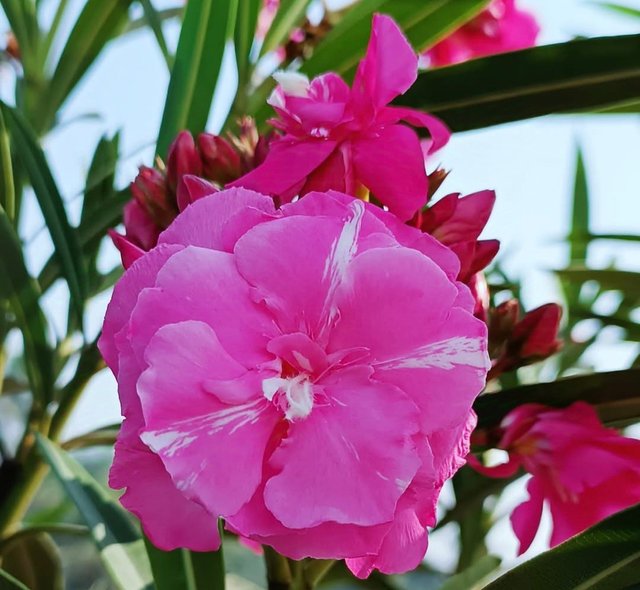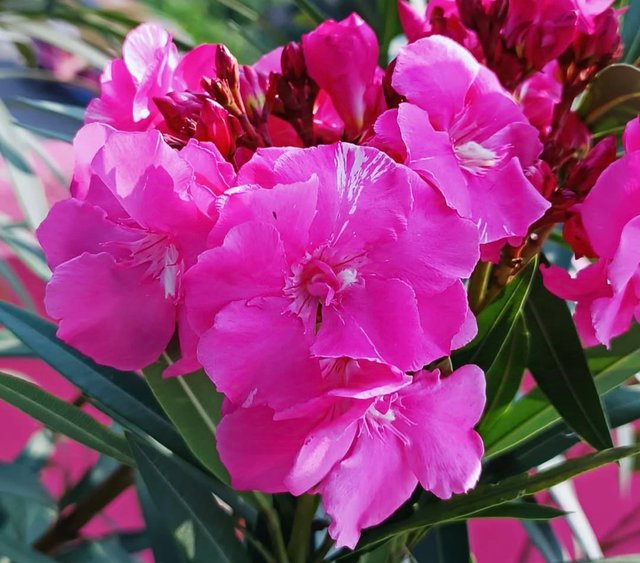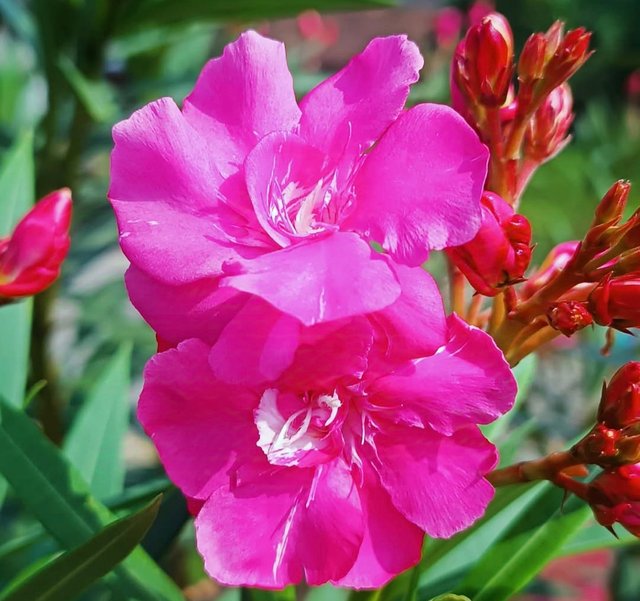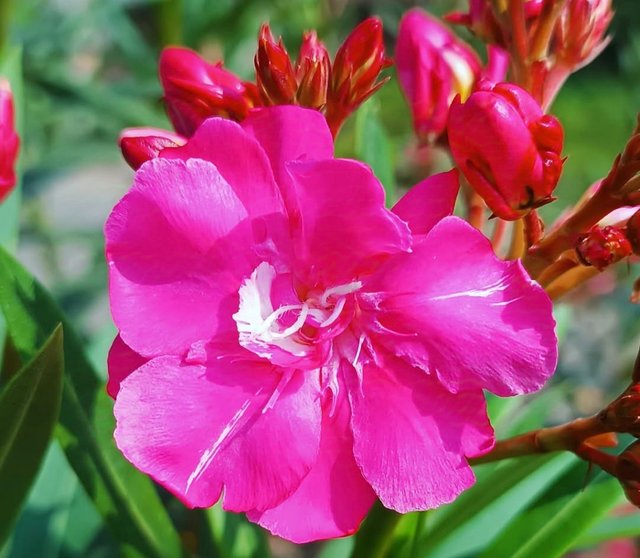The oleander (Nerium oleander) is a strikingly beautiful flowering shrub that graces gardens, roadsides, and parks in warm climates worldwide. Known for its lush, vibrant blooms and hardy nature, oleander has captivated gardeners and landscapers for centuries. However, beneath its beauty lies a potent toxicity that makes it one of the most dangerous ornamental plants.
Oleander flowers bloom in clusters, showcasing shades of pink, red, white, yellow, and peach. The plant thrives in warm, dry climates and is drought-resistant, making it a favorite for low-maintenance landscaping. Its evergreen leaves provide year-round greenery, while its ability to withstand poor soil conditions makes it an adaptable and resilient choice.Oleanders are often planted along highways and public spaces due to their ability to tolerate pollution and salt exposure. Their rapid growth and dense foliage make them excellent natural barriers or hedges, adding privacy and charm to any space.




Despite its beauty, every part of the oleander plant is toxic, including its leaves, flowers, stems, and even the smoke from burning it. It contains cardiac glycosides, compounds that can severely affect the heart. Ingesting even a small amount can cause symptoms such as nausea, vomiting, dizziness, irregular heartbeat, and, in extreme cases, fatal cardiac arrest.Due to its toxicity, oleander should be handled with care, especially around children and pets. Gardeners working with the plant should wear gloves and wash their hands thoroughly afterward.
Through the lens of @snapsage – capturing moments,telling stories and preserving beauty one shot at a time.
Upvoted! Thank you for supporting witness @jswit.
Downvoting a post can decrease pending rewards and make it less visible. Common reasons:
Submit